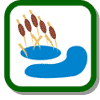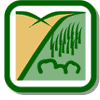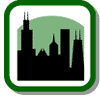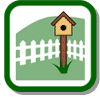| Bird Habitat Links For more information on bird habitats and related issues, visit the following websites. | ||||||||||||||
|
 | |
|
While many people think of Chicago as an urban center that would provide anything but a hospitable environment for birds, this is not the case. Chicago is situated between Lake Michigan to the east and open farmland to the west and south. Birds are mobile and migrate thousands of miles from their nesting grounds in the North to their wintering grounds in the South and back, making their habitat a very broad area, sometimes ranging from one continent to another. Chicago, with its 7,300 acres of parkland, miles of lakefront, dozens of lagoons and ponds, and even our backyards, provides a necessary rest stop for millions of migrants each year. Chicago's bird habitats provide migrants with food, water, and shelter. | |
 Lake Michigan is an important body of water for migrating ducks, grebes, loons, diving ducks, and gulls. Its vegetation, fish, crustaceans, and other aquatic organisms provide food for waterfowl and other birds. The shoreline provides nutrient-rich seaweed, filled with insects and invertebrates for shorebirds to feed on during migration. Other birds use the drier areas, higher up the beach or in shoreline parks, as resting places.
Lake Michigan is an important body of water for migrating ducks, grebes, loons, diving ducks, and gulls. Its vegetation, fish, crustaceans, and other aquatic organisms provide food for waterfowl and other birds. The shoreline provides nutrient-rich seaweed, filled with insects and invertebrates for shorebirds to feed on during migration. Other birds use the drier areas, higher up the beach or in shoreline parks, as resting places.
Birds who use lakes and shorelines include the Common Loon, Common Merganser, Spotted Sandpiper, Belted Kingfisher, Osprey, Bonaparte's Gull, Killdeer, Lesser Yellowlegs, and Common Snipe. | |
 Marshes, such as the area around Lake Calumet, offer food and shelter for ducks, loons, Osprey, and Black-crowned Night Heron. Ponds and lagoons, in the parks and on golf courses, provide habitat for many paddling ducks and allow them to stay for part of the winter. Hemi-marshes, the shallow water at the edges of ponds and lagoons, are attractive to many birds. Marshes, ponds, and lagoons are also used as breeding habitat for amphibians, fish, and insects that provide food for shorebirds and waterfowl.
Marshes, such as the area around Lake Calumet, offer food and shelter for ducks, loons, Osprey, and Black-crowned Night Heron. Ponds and lagoons, in the parks and on golf courses, provide habitat for many paddling ducks and allow them to stay for part of the winter. Hemi-marshes, the shallow water at the edges of ponds and lagoons, are attractive to many birds. Marshes, ponds, and lagoons are also used as breeding habitat for amphibians, fish, and insects that provide food for shorebirds and waterfowl.
Birds who use marshes, ponds, and lagoons include the Black-crowned Night Heron, Common Loon, Belted Kingfisher, Common Merganser, and Common Snipe. | |
 Prairies are grasslands that are mostly treeless. The populations of many prairie bird species are declining, because native grasslands are being devastated by development, agriculture, and over-grazing. Many of these birds use open spaces for flight displays during courtship and many are ground nesters.
Prairies are grasslands that are mostly treeless. The populations of many prairie bird species are declining, because native grasslands are being devastated by development, agriculture, and over-grazing. Many of these birds use open spaces for flight displays during courtship and many are ground nesters.
Savannas are plains characterized by coarse grasses and scattered tree growth. Native savannas, typically dominated by oak trees, are attractive to foraging birds. Other mature tree species with grasslands near and below them also provide shade and perching areas for nearby food sources.
Shrubs provide perches and shelter for those birds that use adjacent grasslands as their feeding grounds. In some cases, these shrubs provide fruit or attract insects that birds feed on. The seeds of many prairie plants are an important food source for fall migrants and winter residents. Some prairies' wildflowers are a direct food source and some attract insects that birds feed upon.
Birds who use prairies, savannas, and shrubby grasslands, include the Eastern Kingbird, Cedar Waxwing, Common Nighthawk, Indigo Bunting, and Red-tailed Hawk. | |
 Densely wooded areas provide good shelter and a concentrated food source. Those areas with flowering and fruiting trees, provide a particularly beneficial habitat because they attract insects. Evergreen trees and shrubs provide year-round shelter, and those such as Junipers, provide berries that birds can feed upon.
Densely wooded areas provide good shelter and a concentrated food source. Those areas with flowering and fruiting trees, provide a particularly beneficial habitat because they attract insects. Evergreen trees and shrubs provide year-round shelter, and those such as Junipers, provide berries that birds can feed upon.
Birds who use woodlands include the Yellow-Bellied Sapsucker, Ruby-throated Hummingbird, Cedar Waxwing, White-throated Sparrow, Baltimore Oriole, and Common Nighthawk. | |
 Surprisingly, some birds acclimate quite well to the City's urban landscape that consists of parking lots, airports, and the rooftops of buildings and skyscrapers. While the most congested parts of the City offer little appropriate habitat for anything but the hardiest of bird species, such as Rocks Doves and House Sparrows, open areas in urban environments regularly harbor a surprising variety of bird species. The urban landscape provides adequate food species, such as insects for Killdeer and White-throated Sparrows, mice for Snowy Owls, and Rock Doves and other birds for Peregrine Falcons. Skyscrapers also mimic the mountain cliffs of the Peregrine Falcon's natural habitat.
Surprisingly, some birds acclimate quite well to the City's urban landscape that consists of parking lots, airports, and the rooftops of buildings and skyscrapers. While the most congested parts of the City offer little appropriate habitat for anything but the hardiest of bird species, such as Rocks Doves and House Sparrows, open areas in urban environments regularly harbor a surprising variety of bird species. The urban landscape provides adequate food species, such as insects for Killdeer and White-throated Sparrows, mice for Snowy Owls, and Rock Doves and other birds for Peregrine Falcons. Skyscrapers also mimic the mountain cliffs of the Peregrine Falcon's natural habitat.
Birds who prosper in urban areas include the Common Snipe, Killdeer, Peregrine Falcon, Red-tailed Hawk, Snowy Owl, and Purple Martin. | |
 Although typically developed and landscaped, our backyards often provide food and shelter for birds. In some cases, we even find them nesting in the eves of our houses. In large cities like Chicago, where natural habitat is scarce or nonexistent, it is important to provide food, water, nesting habitat, and shelter in our backyards and neighborhood parks. When redesigning your yard or adding new plants, landscape with birds in mind.
Although typically developed and landscaped, our backyards often provide food and shelter for birds. In some cases, we even find them nesting in the eves of our houses. In large cities like Chicago, where natural habitat is scarce or nonexistent, it is important to provide food, water, nesting habitat, and shelter in our backyards and neighborhood parks. When redesigning your yard or adding new plants, landscape with birds in mind.
Birds who use our backyards include the Ruby-throated Hummingbird, Purple Martin, White-throated Sparrow, and Common Nighthawk. | |